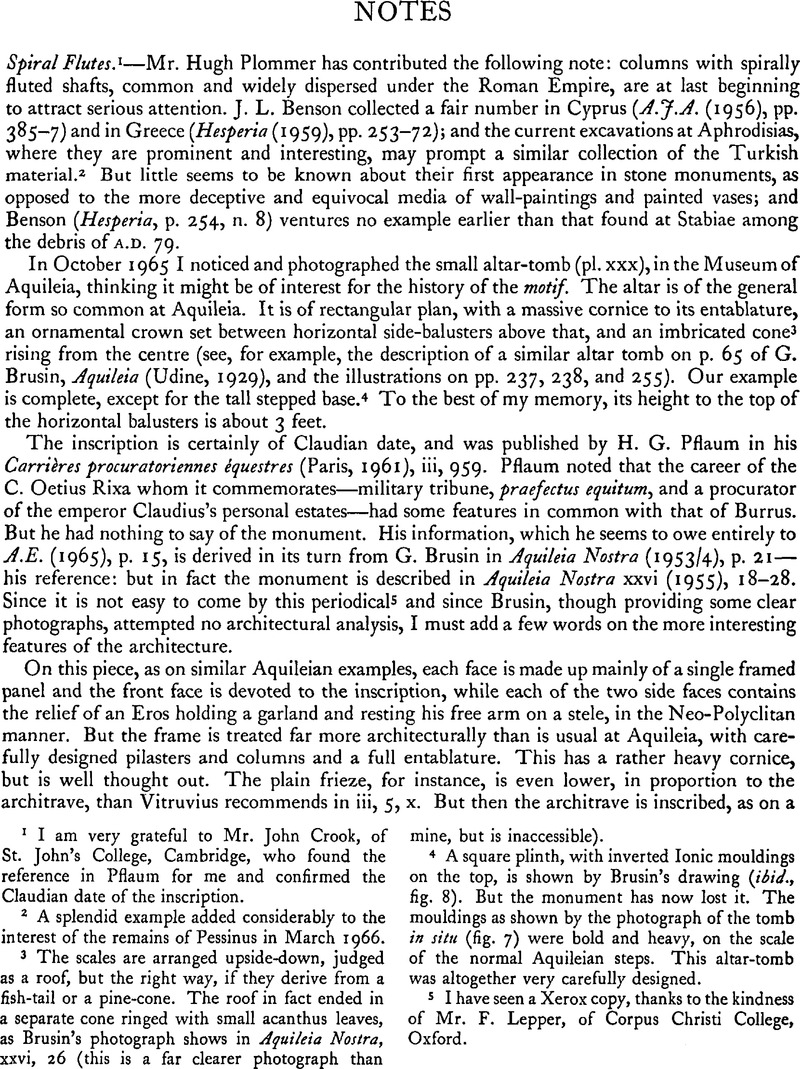No CrossRef data available.

page 127 note 1 I am very grateful to Mr. John Crook, of St. John's College, Cambridge, who found the reference in Pflaum for me and confirmed the Claudian date of the inscription.
page 127 note 2 A splendid example added considerably to the interest of the remains of Pessinus in March 1966.
page 127 note 3 The scales are arranged upside-down, judged as a roof, but the right way, if they derive from a fish-tail or a pine-cone. The roof in fact ended in a separate cone ringed with small acanthus leaves, as Brusin's photograph shows in Aquileia Nostra, xxvi, 26 (this is a far clearer photograph than mine, but is inaccessible).
page 127 note 4 A square plinth, with inverted Ionic mouldings on the top, is shown by Brusin's drawing (ibid., fig 8). But the monument has now lost it. The mouldings as shown by the photograph of the tomb in situ (fig. 7) were bold and heavy, on the scale of the normal Aquileian steps. This altar-tomb was altogether very carefully designed.
page 127 note 5 I have seen a Xerox copy, thanks to the kindness of Mr. F. Lepper, of Corpus Christi College, Oxford.
page 128 note 1 The inscription of Gallienus upon it is evidence against a date under that emperor. For it mutilates the original architrave.
page 128 note 2 But Vitruvius makes his Archimedean Screw not by incision, but by the addition of winding osier-strips to a long central cylinder (Vitruvius x, 6).